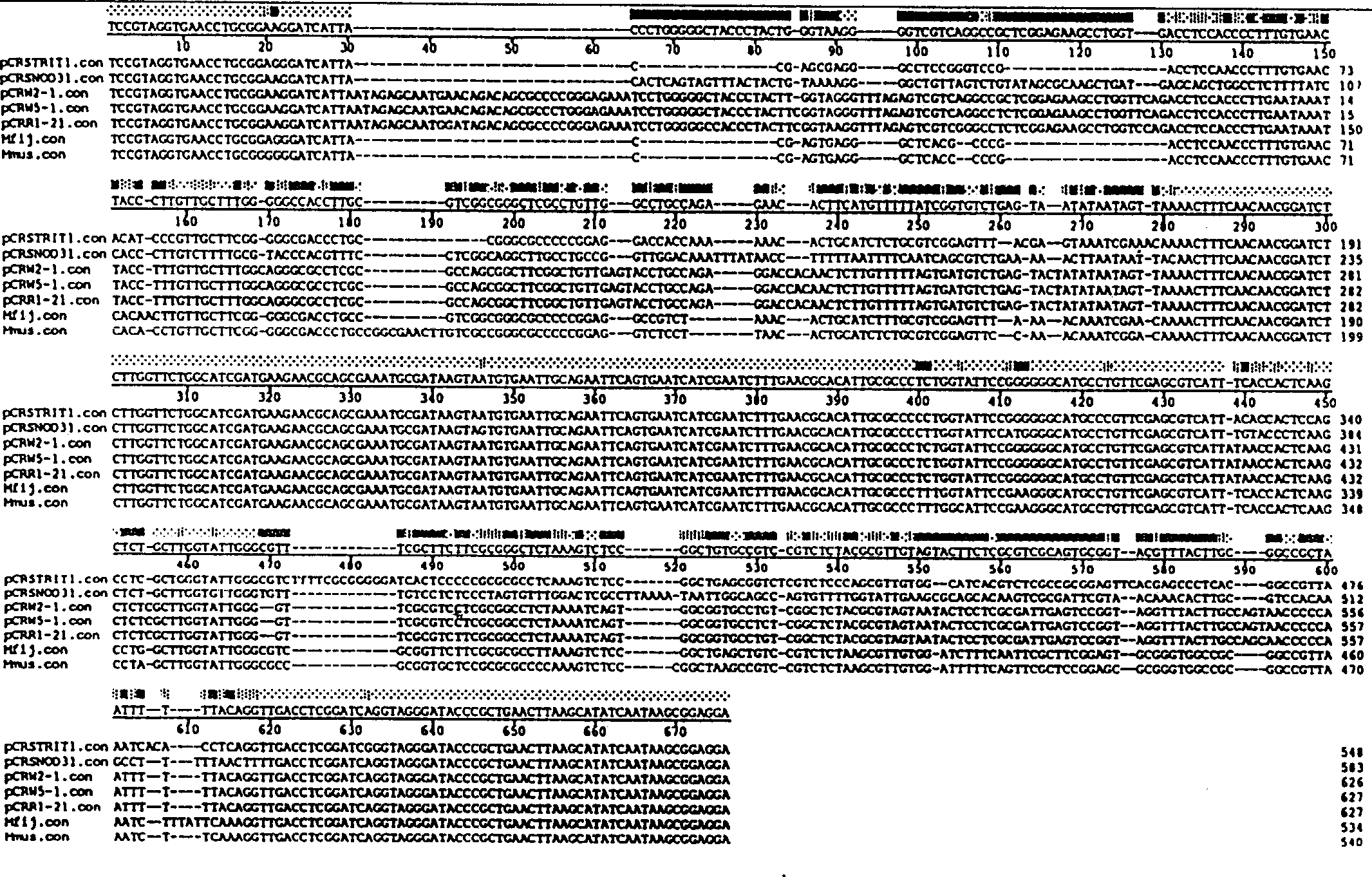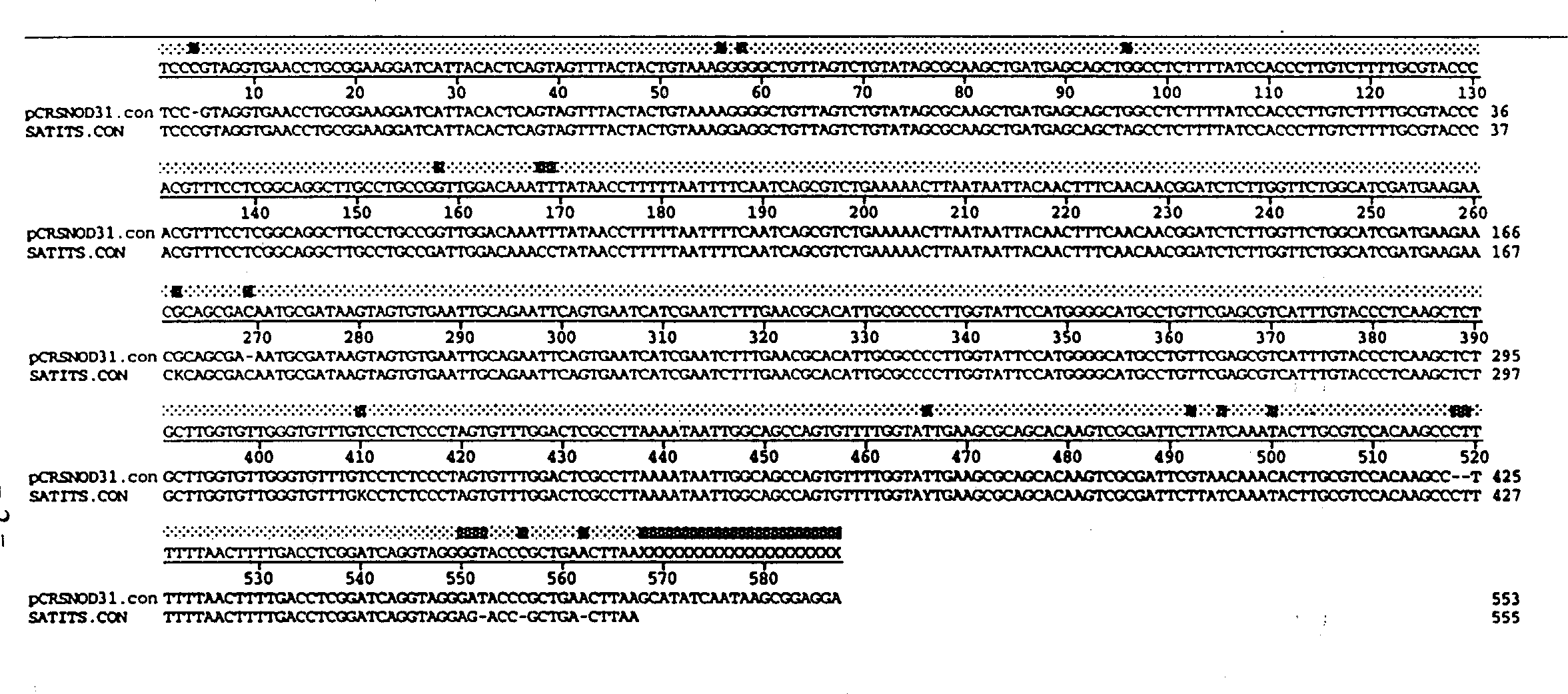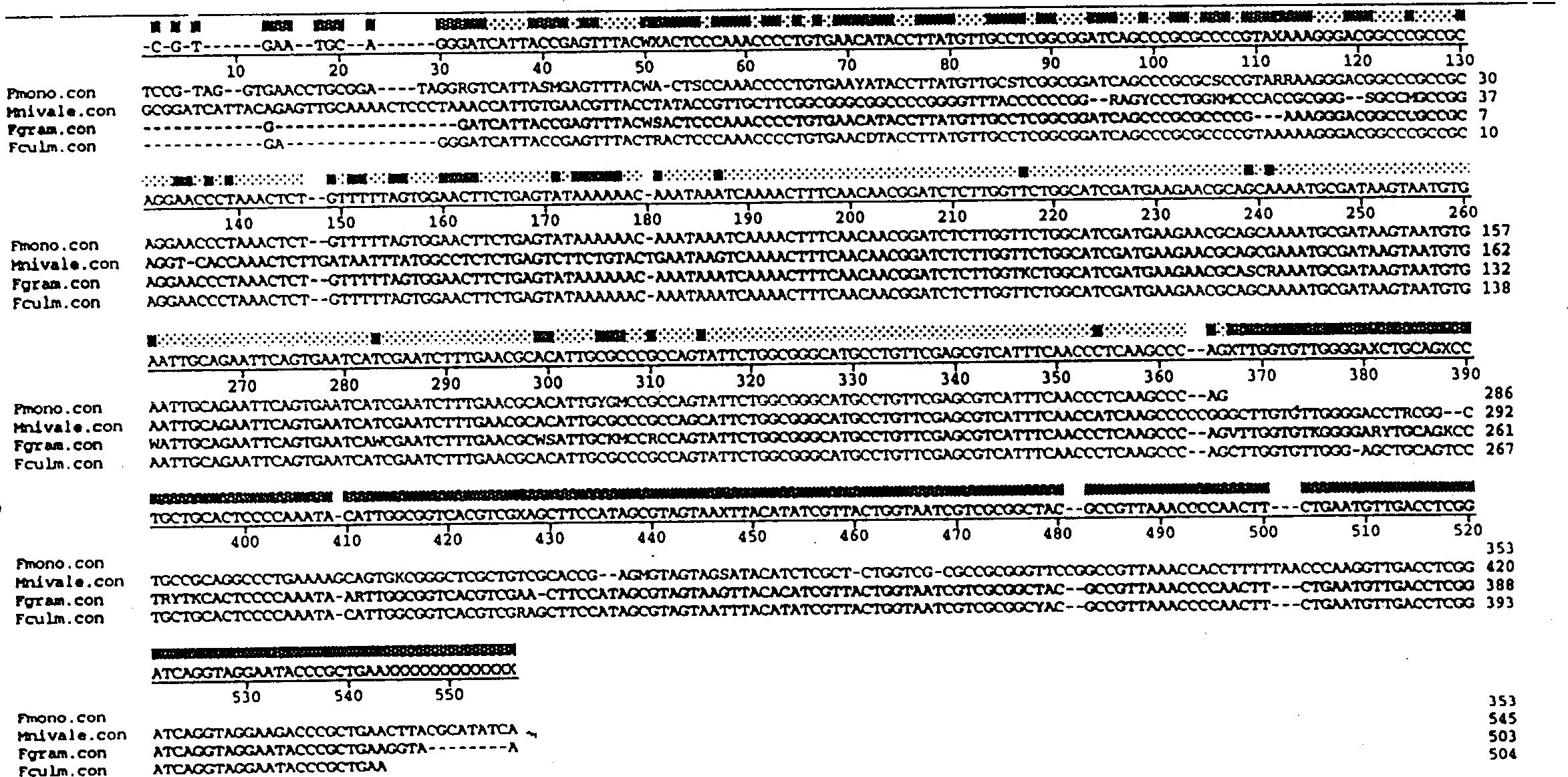Detection of fungal pathogens using polymerase chain reaction
A technology of pathogenic bacteria and polymerase, which is applied in the direction of fungi, applications, determination/inspection of microorganisms, etc.
- Summary
- Abstract
- Description
- Claims
- Application Information
AI Technical Summary
Problems solved by technology
Method used
Image
Examples
Embodiment Embodiment 1
[0030] Examples Example 1: Fungal isolates and extraction of genomic DNA
[0031] Needle spores, Needle spores of wheat, Needle spores of hordeum, Needle spores of soya bean, Pseudocercospora versicolor, Pseudocercospora summeringii, Coccidinium citrus, Coccidinium graminea, Coccidinium fizi, and Musical ball Live fungal isolates of Coelophytes were obtained from the American Type Culture Collection (ATCC). Fusarium violaceus and Fusarium graminearum isolates were obtained from Dr. Paul Nelson of Pennsylvania State University. The isolate of Hyphosporium snow was obtained from ciba-Basel, and the isolate of Fusarium moniliforme was obtained from Dr. Loral Castor. The fungus was grown in 150 ml of potato dextrose broth, which was inoculated with mycelial fragments from PDA (potato dextrose agar) culture. The culture was grown on an orbital shaker at 28°C for 7-11 days. The mycelium was precipitated by centrifugation, then crushed in liquid nitrogen, and the method of Lee and Taylor...
Embodiment 3
[0035] In addition, from 25ng of Needle spp., Triticum aestivum, Hyphosporium snow, Fusarium moniliforme (#4551), Fusarium graminearum isolates R-8417, R-8546 and R-8422, and Fusarium spp The genomic DNA of spore isolates R-5126, R-5106 and R-5146 was amplified by PCR in the internal transcription spacer region. The PCR product was purified using Promega Wizard DNA cleaning kit (Madison, WI). Using ITS1 (SEQ ID NO: 38), ITS2 (SEQ ID NO: 39), ITS3 (SEQ ID NO: 40) and ITS4 (SEQ ID NO: 41) primers, the DNA sequence of the ITS region was determined according to the above method. The sequencing reaction was combined with three isolates of Fusarium spores and Fusarium graminearum to generate sequences consistent with Fusarium spores and Fusarium graminearum. Example 3 DNA extraction from wheat and banana leaves
[0036] Using MicroProbe (Garden Grove, CA) Iso Quick Nucleic Acid Extraction Kit (MXT-020-100), DNA was extracted from wheat leaves through an improved rapid DNA extraction met...
Embodiment 4
[0050] A Genl Amp kit from Perkin-Elmer / Cetus (Norwolk, CT; part number N808-0009) was used to complete the polymerase chain reaction, in which 50mM Kcl, 2.5mM MgCl were used 2 , 10mM Tris-Hcl (pH8.3), 100μM TTP, dATP, dCTP and dGTP, 50mM primers, 2.5 units Taq polymerase and 25ng genomic DNA, the final volume is 50μl. The reaction was cycled 30 times in a Perkin-Elmer / Cetus 9600 thermal cycler, and each cycle included 94°C for 15 seconds, 50°C, 60°C or 70°C for 15 seconds, and 72°C for 45 seconds. The products were analyzed by loading 20 μl of each PCR sample on a 1.1-1.2% agarose gel and electrophoresing. Example 5: Synthesis and purification of oligonucleotides
PUM
 Login to View More
Login to View More Abstract
Description
Claims
Application Information
 Login to View More
Login to View More - R&D
- Intellectual Property
- Life Sciences
- Materials
- Tech Scout
- Unparalleled Data Quality
- Higher Quality Content
- 60% Fewer Hallucinations
Browse by: Latest US Patents, China's latest patents, Technical Efficacy Thesaurus, Application Domain, Technology Topic, Popular Technical Reports.
© 2025 PatSnap. All rights reserved.Legal|Privacy policy|Modern Slavery Act Transparency Statement|Sitemap|About US| Contact US: help@patsnap.com



